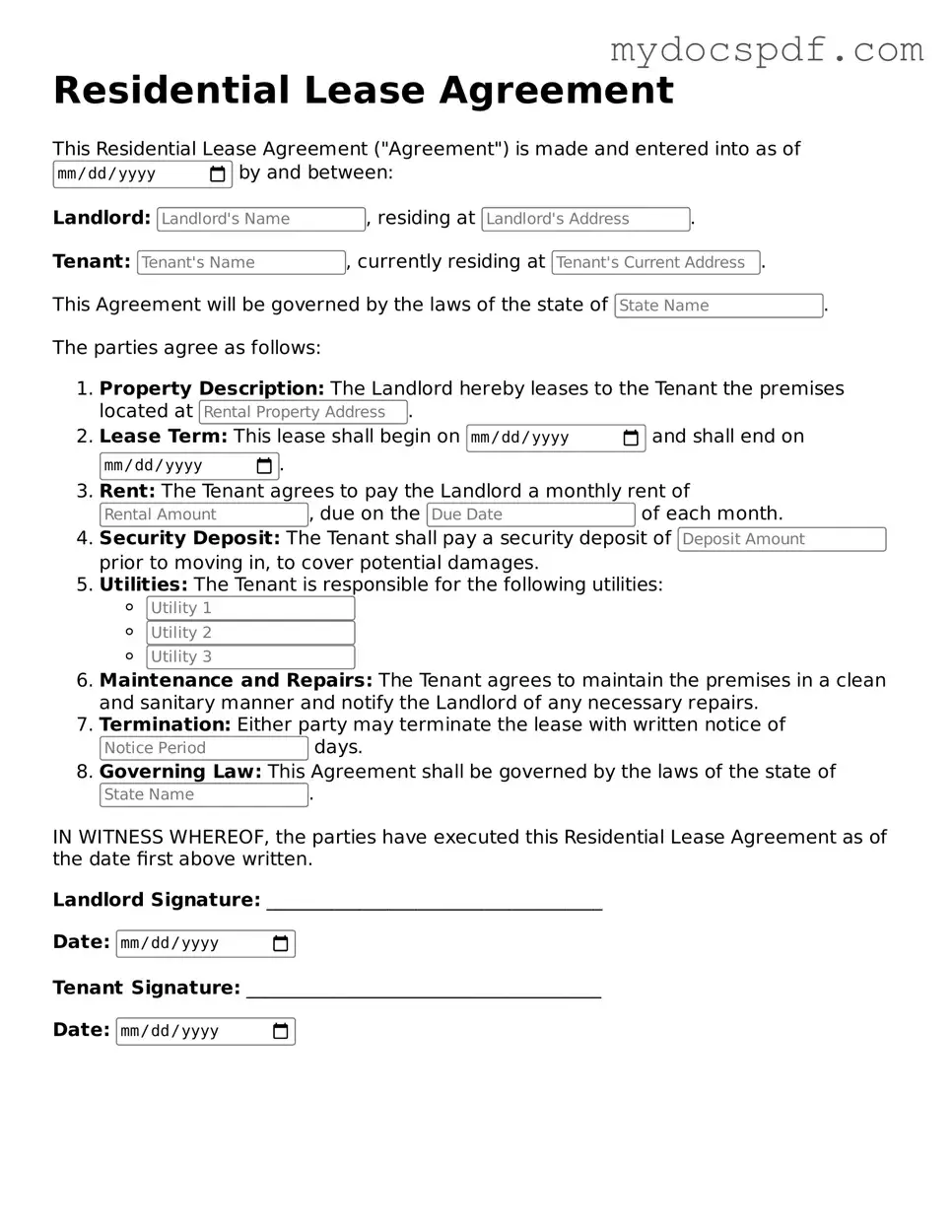Attorney-Approved Residential Lease Agreement Template
A Residential Lease Agreement is a legally binding contract between a landlord and a tenant that outlines the terms and conditions for renting a residential property. This document serves to protect the rights of both parties and establishes clear expectations regarding rent, duration of the lease, and responsibilities for maintenance and repairs. Understanding the components of this agreement is essential for ensuring a smooth rental experience.
Access Editor Here
